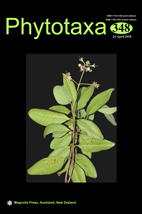Abstract
Botryosphaeriales is an order comprising of latent fungal pathogens with a wide range of woody hosts. These pathogens represent interesting and diverse fungi with a confusing taxonomy due to their similar morphological characters. Many genera or families of this order have not been robustly sampled or systematically studied in separate hosts and regions, although recent studies have made enormous progress. In this study, five species of Aplosporellaceae and Botryosphaeriaceae were isolated from Juglans regia (Juglandaceae), Rhus typhina (Anacardiaceae) and Ziziphus jujuba (Rhamnaceae) in Dongling Mountain of China. These species include Aplosporella ginkgonis, Aplosporella javeedii, Botryosphaeria dothidea, Phaeobotryon rhoinum sp. nov. and Phaeobotryon rhois. Of which, Aplosporella javeedii and A. ginkgonis were identified as the first records from Ziziphus jujube and Rhus typhina, respectively. Phaeobotryon rhoinum is characterised by its globose, scattered to gregarious pycnidia with ellipsoid to oblong, brown, 1-septate conidia. It can be distinguished from the similar species P. cercidis, P. cupressi, P. mamane, P. quercicola and P. rhois based on host association and conidial size and colour. The results represent the first attempts to study Aplosporella, Botryosphaeria and Phaeobotryon with descriptions and multi-locus phylogenies (ITS, LSU and TEF-1α) in Dongling Mountain of China.

